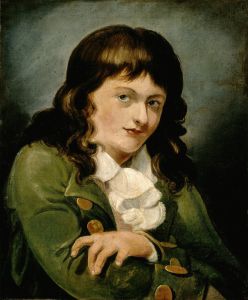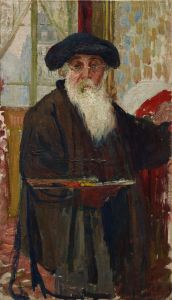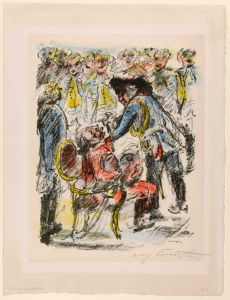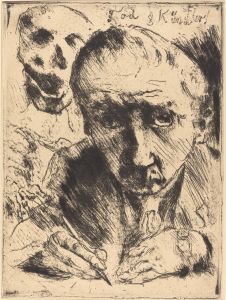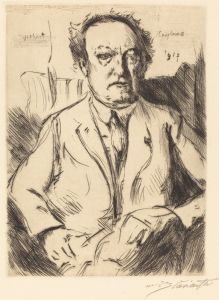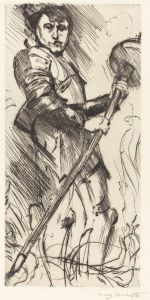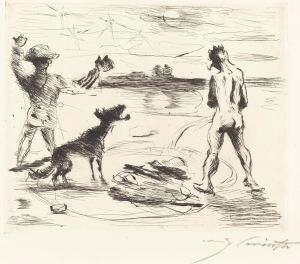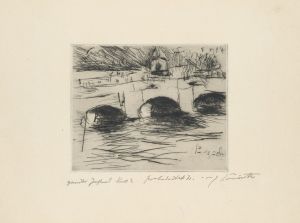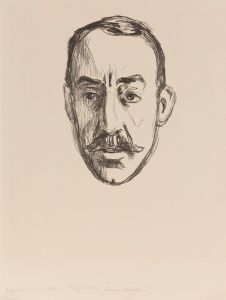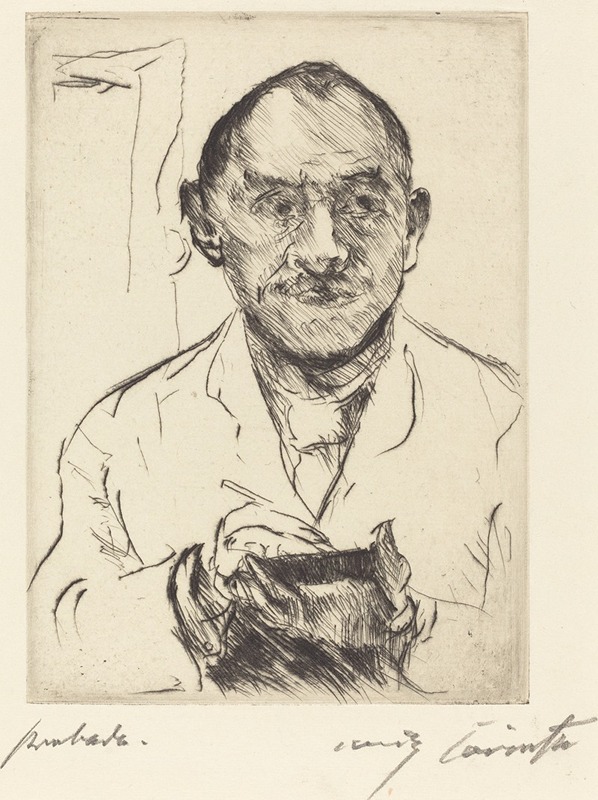
Self-Portrait
A hand-painted replica of Lovis Corinth’s masterpiece Self-Portrait, meticulously crafted by professional artists to capture the true essence of the original. Each piece is created with museum-quality canvas and rare mineral pigments, carefully painted by experienced artists with delicate brushstrokes and rich, layered colors to perfectly recreate the texture of the original artwork. Unlike machine-printed reproductions, this hand-painted version brings the painting to life, infused with the artist’s emotions and skill in every stroke. Whether for personal collection or home decoration, it instantly elevates the artistic atmosphere of any space.
Lovis Corinth, a prominent German painter and printmaker, created several self-portraits throughout his career, reflecting his evolving artistic style and personal experiences. One of his notable self-portraits, titled Self-Portrait (German: Selbstbildnis), exemplifies his mastery of color, texture, and psychological depth. Corinth was a leading figure in the transition from Impressionism to Expressionism, and his self-portraits often reveal his introspection and emotional state.
Born in 1858 in Tapiau, East Prussia (now Gvardeysk, Russia), Corinth studied art in Königsberg, Munich, and Paris. His early works were influenced by academic traditions, but he later embraced Impressionist techniques. After moving to Berlin in 1901, he became a central figure in the Berlin Secession, an art movement that sought to challenge traditional academic art.
In 1911, Corinth suffered a stroke that temporarily paralyzed his left side. This event marked a turning point in his life and work. Despite his physical challenges, he continued to paint, and his style became more expressive and emotionally charged. His self-portraits from this period often convey a sense of vulnerability and resilience.
One of Corinth's self-portraits, created in 1923, is particularly significant. Painted just a year before his death, it shows the artist as an older man, confronting his mortality. The work is characterized by bold brushstrokes, a rich color palette, and a penetrating gaze that captures the viewer's attention. This self-portrait is often interpreted as a reflection of Corinth's acceptance of aging and his enduring commitment to his art.
Corinth's self-portraits are housed in various museums and private collections worldwide. They are celebrated for their technical skill, emotional depth, and ability to convey the complexities of the human experience. Through these works, Corinth not only documented his physical appearance but also offered a window into his inner world, making his self-portraits a significant contribution to the history of art.





